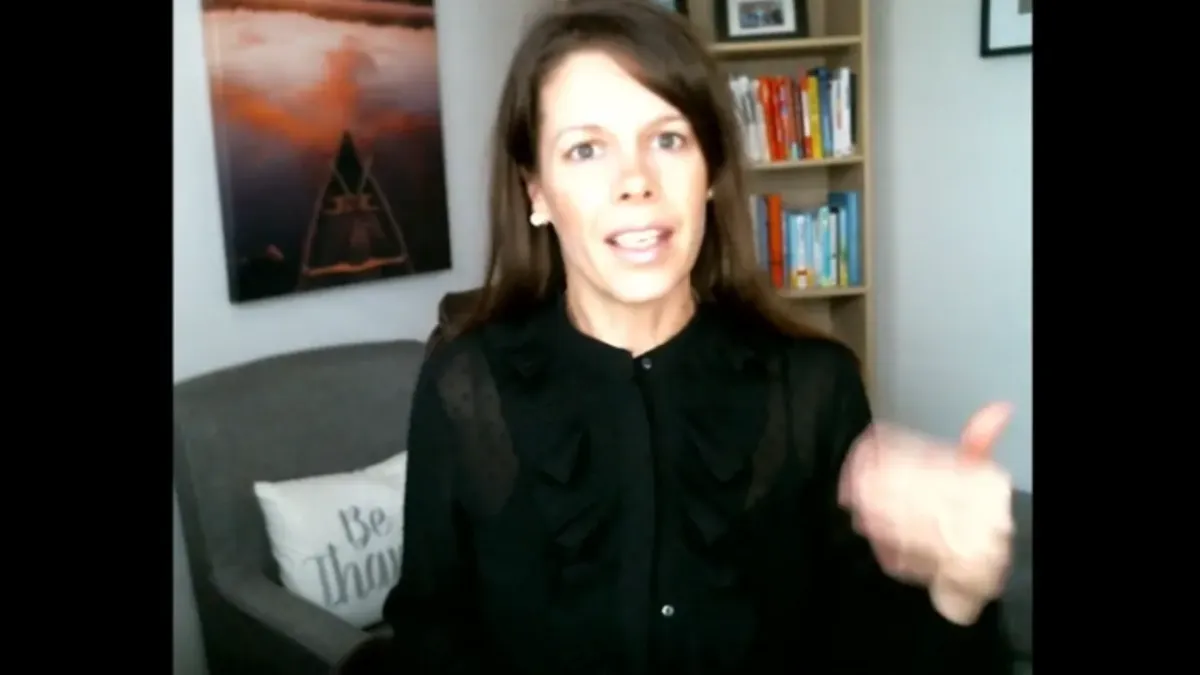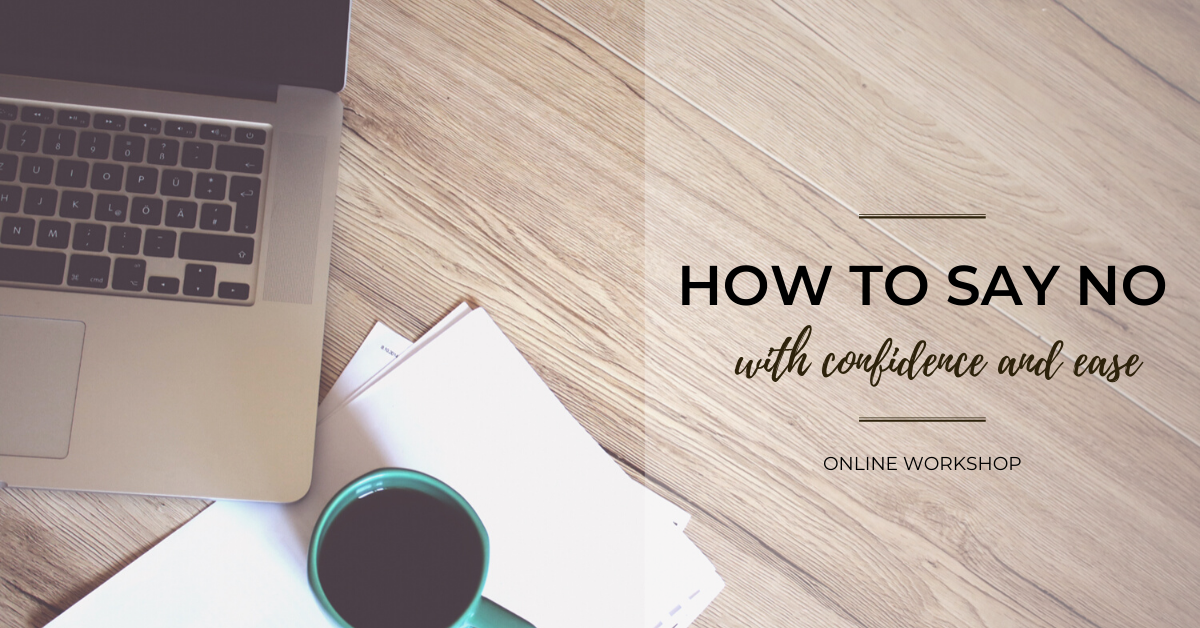
All The Worry Is Not Solving Your Problem; It IS The Problem!
This week I am feeling VERY behind. And it’s only Wednesday!
Projects are taking longer than planned, I have a couple of big workshops that I need to put together, and random issues keep coming up that are distracting my time and attention.
At the end of the day yesterday, I looked at the three important tasks I had planned to do for the day . . . and not a single one was done. Or even started. Whaattt?
I felt like I was doing stuff all day long, but didn’t make any progress on what would move the needle. We all have our days where we get off track without intending it to go that way.
It's what you think and do in those moments that make all the difference.
My first thoughts were “Oh my goodness, I just lost a day, now I have double the work for tomorrow! What if I don’t get everything done? What if I am not prepared enough? Why did I waste so much time?” and so on.
The old me would have continued that spiral of all the ‘what ifs’, worst-case scenarios and negative thinking.
Yet I quickly stepped out of it because it certainly would not help me accomplish what I need to get done this week.
A big mistake that so many busy leaders fall into is constantly thinking and stewing about a problem to solve the problem.
Yet that is making your problem an EVEN bigger issue!
Because so much of that thinking is wrapped up in worry.
Worry about “what if I don’t get done my project by the deadline”.
Worry about “what if I say something stupid in the meeting”.
Worry about “what if my boss is upset when I say no or share feedback”.
(Watch the video or keep reading for why worry is not solving your problem and what you can do instead to step out of the spiraling).
Worry is a huge waste of your mental energy, leads to higher anxiety, completely undercuts your performance, and simply, doesn’t feel very good.
You are less focused, not thinking as clearly and you miss seeing options and what’s possible.
I get it. I used to really struggle with this and would be in my head all. the. time.
I’d constantly worry about letting other people down, what if I fail at something, and replay in my mind every little detail from a conversation that didn’t go well.
And when I was at home in the evenings, I’d be thinking about my mile-long to-do list or stressing about a big presentation rather than being present with my kids.
Even though at the time I didn’t realize that was what I was doing or the impact it was having on my performance and relationships!
But let me ask you . . . when you are worried about something, do you feel like you’re getting things done faster? Do you feel like you’re thinking as clearly as you could be to come up with a solution?
Is the worry or anxiety helping you to move forward in a positive and productive way (or just amplifying all the worst-case scenarios in your mind)?
And are you taking action on things within your control? Like speaking up about something you have to say or giving feedback to someone who needs to hear it or being laser-focused on the task at hand.
Likely not.
Because the more you worry, the more you’ll have to worry about – it’s a self-fulfilling prophecy.
You aren’t taking the action you know you need to take, so you keep spiraling.
Your thinking is clouded, so it takes longer to come up with meaningful solutions.
Your attention is focused on all the things that could go wrong and thereby increasing your chances of things going wrong.
As the old saying goes, worrying is like praying for something bad to happen.
Besides the fact that anytime you are worried, you are not present in the moment, and so you miss the small joys and opportunities right in front of you.
If you continue the behavior of constantly worrying and stewing about a problem, when in fact . . .
It’s the worry that’s your real problem.
It serves a purpose as a cue to pay attention that this is something you care about, but then it’s time to shift gears and move out of the worry.
Because essentially, we make things small and manageable or big and daunting all in our minds.
So, the quicker you can step out of the worry (which will happen) and keep things small and manageable in your mind, the sooner you can get to tackling it and making real progress forward.
You’ll see more options and can take more positive and productive action.
And anyone can do this . . . you are in a habit of worry and like anything you can create a new habit.
Now, the question you might have is: how do you possibly do this and step out of the worry so you can focus on what’s more positive and productive use of your time?
Reframe.
You can change your inner story and dialogue by asking yourself better questions. What’s a more optimistic way to see the situation?
What can I do (instead of focusing on what you can’t do)? What will get me back on track (instead of doom)?
The mind is tricky and will go where your thoughts take it…so the more you stew about what could go wrong, the more reasons you’ll come up with why things will go wrong.
Your thoughts influence your actions, which influence your outcomes.
So, practice being more resilient in the moment and shift your perspective to a more optimistic view. You’ll take more positive and productive action when you do.
Plan for the ‘worst-case scenario’.
Wasting critical energy (ruminating) on the worst-case scenarios blocks you from taking action.
It creates an imbalance of overestimating your assessment of the situation and underestimating your own resources to cope. This is common when anxiety is high.
Instead of worrying about what might happen, plan for it or mitigate the worst-case scenario. “If X happens, I will Y”.
This puts you in a state of resourcefulness and gives your mind a rest . . . because you have a plan!
Focus on what you can control and influence, and let go of what you can’t.
Trust in yourself.
Instead of worrying about what you didn’t do or what might happen, put your attention on what you can do and trust in your ability to figure it out.
You have likely handed more difficult situations and things tend to work out.
When our brains are positive we are more focused, resilient, energetic and so on. So, put things into perspective and remind yourself that you are awesome and capable.
******
These simple, yet effective strategies teach you to pause and think before responding or spiraling. And, stepping out of the worry is 100% within your control.
You get to choose if you want to waste your mental energy freaking out about all the ‘what ifs’ and worst-case scenarios or use your energy in a far more positive and productive way.
What's on your mind? Share in the comments!

What Next?

You can sign up for Stacey's masterclass, The Confident "No" here.

Stacey L. Olson is a Leadership and Certified Positive Psychology Coach, has 15 years of corporate experience and has gone through her own transformational change from burning out to balanced in life while performing at a high level (both in her corporate career and own business). She works with professionals who want to work less, live more and be their best even with all the demands, high expectations and messiness of everyday life. Stacey is the founder of The Balanced Leader™ program and offers executive and leadership coaching, workshops, and speaking.
